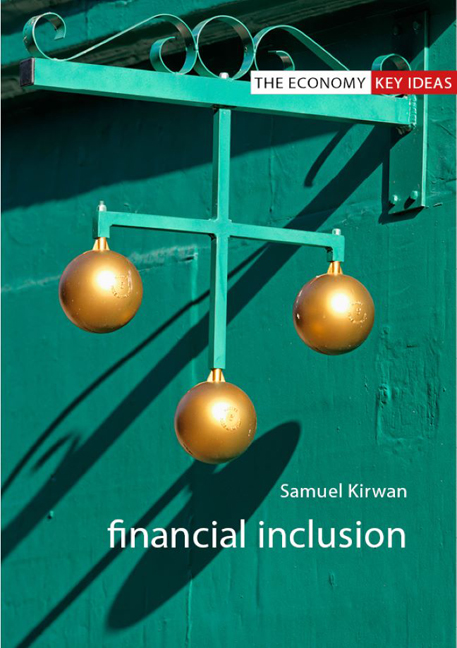Book contents
- Frontmatter
- Contents
- 1 Introduction
- 2 What is financial inclusion?
- 3 Financial inclusion as a tool of poverty eradication: the case of microcredit
- 4 Financial inclusion as the production of new markets: the case of reverse redlining
- 5 Financial inclusion as financial subjectivity: the case of financial capability in the UK
- 6 Financial inclusion as political project: the case of conditional cash transfers
- 7 Financial inclusion as transformations in financial practice: the case of mobile money
- 8 Conclusion
- References
- Index
4 - Financial inclusion as the production of new markets: the case of reverse redlining
Published online by Cambridge University Press: 21 December 2023
- Frontmatter
- Contents
- 1 Introduction
- 2 What is financial inclusion?
- 3 Financial inclusion as a tool of poverty eradication: the case of microcredit
- 4 Financial inclusion as the production of new markets: the case of reverse redlining
- 5 Financial inclusion as financial subjectivity: the case of financial capability in the UK
- 6 Financial inclusion as political project: the case of conditional cash transfers
- 7 Financial inclusion as transformations in financial practice: the case of mobile money
- 8 Conclusion
- References
- Index
Summary
Throughout this book I explore interventions, projects and initiatives that identify an excluded group – whether by geography, gender, knowledge or other factors – and propose and implement ways in which they can be included. In this chapter I turn to the practices of redlining and reverse redlining to display the danger of approaching this inclusion/ exclusion binary as nothing more than a problem to be solved or threshold to be crossed. The chapter describes how the previous exclusion of vulnerable consumers, coupled to their continuing socio-economic marginalization, can itself become factored into calculations of profit and risk, leading to new forms of exploitation and inequality.
The chapter thus adds a vital note of caution to the concept of financial inclusion, urging attention to how structural inequality continues to shape the terms on which groups are included in financial markets. In this spe-cific case, it explores how the opening of mortgage finance opportunities to non-normative consumers, principally African-American, Latino and single-female households, allowed lenders, investors and others to justify amassing considerable profits through the burdening of vulnerable consumers with considerable costs and risks.
The chapter also considers, through the concept of the feminization of finance, what the history of reverse redlining tells us about the specific dynamics of the financial inclusion of women. It notes the forms of financial subjectivity that women are expected to embody, and the considerable burdens single mothers in particular are expected to carry in an era of stagnating wages and the retreat of the welfare state. The chapter notes also, through this focus upon the female financial subject, the specific nature of financial inclusion in mortgage finance. At the heart of the sub-prime crisis was the changing nature of the family home; no longer valued as a space to be lived in, the home became a commodity whose rising value could be drawn upon in a speculative manner.
Redlining
Few histories of financial exclusion are as stark and unambiguous as the systematic withholding of mortgage finance opportunities to non-normative households in the United States. This form of exclusion, running across the middle decades of the twentieth century, is generally brought together under the term redlining: the practice through which geographically demarcated areas, typically inner-city areas with large African-American populations, were defined as being of poor credit risk and unworthy of mortgage-financed owner-occupation.
- Type
- Chapter
- Information
- Financial Inclusion , pp. 39 - 52Publisher: Agenda PublishingPrint publication year: 2021

